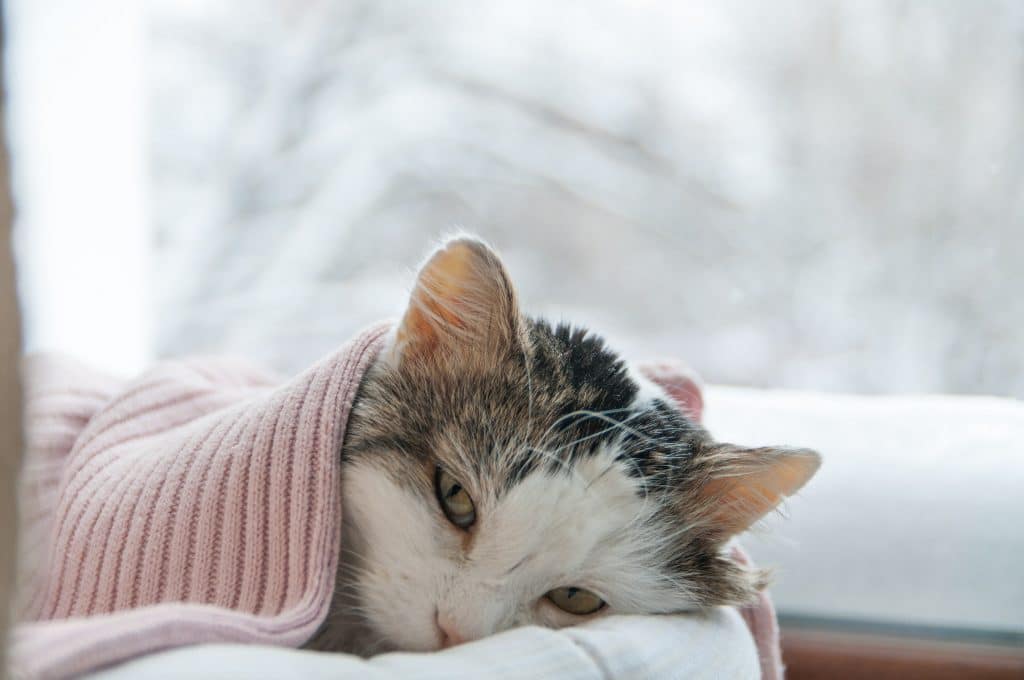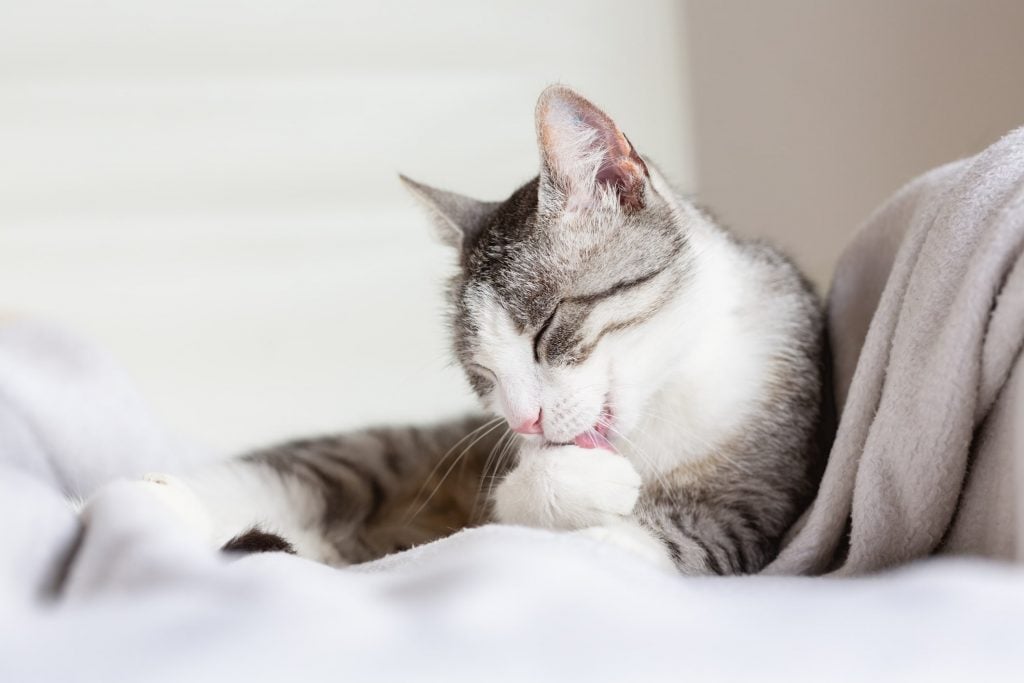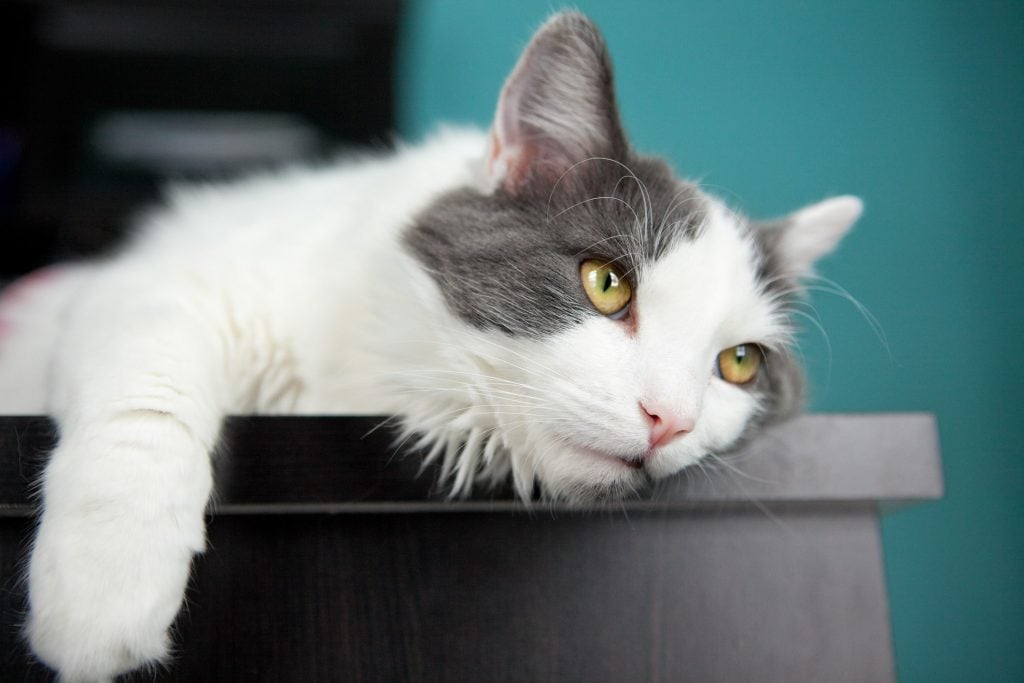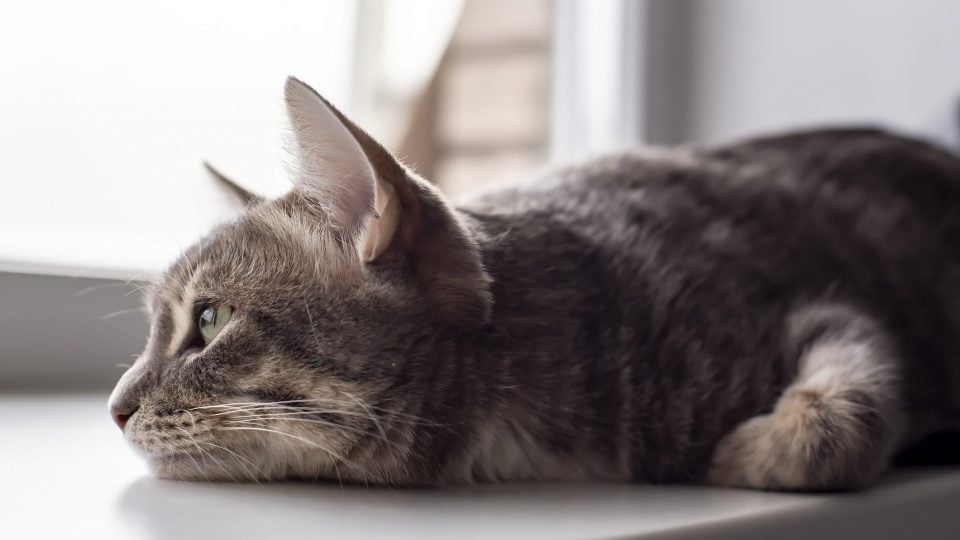Cats experience a wide spectrum of emotions, and there will inevitably be times when they’re feeling blue. They may not be able to say: “I’m unhappy,” but they are communicating, whether it’s erratic tail movements, vocalisations, or behaviour changes. If your vet rules out a medical condition, your cat could be depressed.
Many signs of an unhappy cat can also indicate physical ailments. It’s best to rule out injuries and illnesses before reaching a conclusion about their mood. When in doubt, a trip to the vet can help you make sense of your cat’s unusual behaviours. Learning to recognise when your cat’s behaviours are abnormal can also help you to identify if your cat needs professional help.
If you suspect your cat isn’t feeling like their normal happy self, here are some clues that can help you determine if your cat is depressed.
How to Tell If My Cat is Depressed: Signs and Symptoms
Before you can determine if your cat is depressed, you should rule out health concerns. Dr. Mikel Delgado says that although there are some clear symptoms of cat depression, they might not tell the whole picture. She says “we can infer, but we can never truly know what’s going on in our cat’s mind.”
These symptoms can indicate a larger health concern and a need to take your cat to the vet:
- not eating or drinking
- excessive scratching
- grooming to a point of hair loss
- withdrawal or hiding
If you suspect your cat has become apathetic, you may also want to keep an eye out for other potential symptoms of depression, such as:
Disinterest in normal activities
If a cat loses interest in playing with their toys or engaging in normal behaviours, it could be a sign that they’re not feeling well. Dr. Delgado refers to these normal behaviours as “good welfare signs.” She goes on to say that if your cat is depressed, they tend to have lower energy, lose interest in playing or interacting with you, and fail to engage in other species-specific behaviours. While it’s common for cats to want some alone time to relax, if there’s a significant change in what’s normal for them, they might be depressed.
Increased hiding or withdrawal
It’s common for cats to hide out from time to time.“[But] cats should not be sitting or hiding in one spot all day,” says Dr. Delgado. If a cat becomes significantly more reclusive than usual, it may be a sign that they’re feeling down.
Hiding can also indicate that a cat isn’t interested in activities they usually enjoy, such as playing with toys or cuddling up with their humans. Cats with depression are generally more fearful, and they may hide to soothe and protect themselves.
Sleeping more or in different locations
Cats sleep an average of 15 hours a day, so if you notice they’re sleeping a lot, it’s not always cause for concern. Dr. Delgado says cats love to sleep and need lots of it, but if they sleep too much, it might signal depression. Also, a shift in the location of where they doze off can be a clue that they’re not feeling like themselves.

Tanchic/iStock
Verbalisations
Cats can be pretty vocal animals, but if you notice a change in their vocalisations, it could indicate that something is awry. In particular, a loud, mournful yowl low in pitch can be their way of saying that they’re unhappy. While purring often means a cat is content, depressed cats may purr more than usual to comfort and soothe themselves. Additionally, excessive purring can also indicate that a cat is unhappy.
Tense body language
Cats speak volumes through their body language, and they have a number of ways of physically communicating that they’re unhappy. If you notice that a cat’s ears are back, their fur is standing on end, or their tail is tucked instead of raised high, they likely aren’t feeling their best. It’s common for cats to tense up while they’re playing, but a happy and healthy cat will relax afterwards.
Increased or decreased appetite
Like humans, if a cat is feeling low, it can directly affect their interest in food. If a cat is depressed, they may suddenly stop eating. They may even turn down their favourite treats. While less common, unhappy cats may also increase their food intake as a way to self-soothe. Regardless of whether they’re eating more or less, a change in eating habits can indicate that cats aren’t feeling like their normal happy selves.
Aggression
Pet parents often think that aggression in cats is simply a response to a threat, but it can actually communicate a number of things, including their mood. Aggression stemming from depression isn’t just a “stop it bite” or occasional hiss; it’s a consistent series of behaviours. Unhappy cats are more likely to perceive things as threats, whether or not they actually are. Subsequently, if a cat is feeling depressed, they often become more hostile and frequently lash out at you or other pets in the home.
Over or under-grooming
Grooming is part of a normal and healthy cat routine. However, when a cat is feeling down, their grooming habits can take a sharp turn. A depressed cat may increase or decrease the amount that they groom themselves. Some cats may even stop grooming completely. As a result, unhappy cats often have gnarly, unkempt coats. If they start over-grooming, you may start to see bald patches on your cat. A trip to the vet can help them get their grooming habits back on track. Your vet can prescribe your cat Clomipramine, used to treat anxiety and depression, to help reduce overgrooming behaviours.

SilviaJansen/iStock
Spraying
Spraying might seem like an act of rebellion, but it can actually be intended for a cat’s own comfort. According to the Veterinary Ireland Journal, cats will sometimes spray their urine to self-soothe. Surrounding themselves with their own scent can help reduce anxiety. As unhappy cats tend to be more fearful, they will do whatever they can to mitigate the fear, including urinating outside the litter box. This often happens if a particular situation is causing the cat’s low mood.
Destructive scratching
Scratching is a normal cat behaviour, and they scratch as a marking behaviour to deposit their scent from glands on their paws. According to the Cornell Feline Health Centre, cats also scratch to remove the translucent covering (the sheath) from their claws. While scratching is normal, excessive, destructive cat scratching is when felines claw household objects that aren’t their scratching posts or acceptable scratching spots. Dr. Delgado says this could indicate the cat is stressed or upset. To help with destructive cat scratching, she suggests that pet parents assess what their kitty needs and try redirecting them to scratching posts or other normal scratching items.
5 Causes or Triggers Behind Cat Depression
Dr. Delgado says the following triggers are several of the most common reasons for cat depression:
- A change in a cat’s environment. Cats are very sensitive to any change in their lives, big or small. Some changes that might cause a cat to be depressed include a big move to a new home, new furniture, or a partner moving into your home.
- Stress. Like humans, stress is a common reason for cat depression and other feline illnesses. When a life stressor happens to a cat, they can develop symptoms of depression, including aggression and other behavioural issues.
- Other cats. Cats are very particular, so introducing a new cat into their home can lead to all sorts of problems, including depression, because it’s a drastic change. Pet parents wanting to bring another cat into their home should do so properly to avoid unnecessary stress for both felines.
- Grieving. When we lose a precious companion, we grieve their loss. Turns out cats do the same. Cats might not show their grief the same way, but the loss of their companion can make them show signs of depression, such as withdrawal, a change in appetite, overgrooming, changing sleep patterns, and more. To help, pet parents should understand that grief has no timetable, but including extra playtime, attention, and patience can help.
- Separation anxiety. Sometimes, we have to spend time away from our cats. There’s a belief that cats can easily cope with long absences from their owner. However, recent studies have shown that cats are more sociable than we think and form special bonds with their humans. Therefore, they are more likely to show behaviour changes, like depression, when you’re gone for long periods.
What’s normal for one cat may not be normal for another, so look at changes in their specific behavioural patterns to see if something is amiss. Cats are generally creatures of habit, so when there’s suddenly a shift in their behaviour, it’s very unlikely that it’s random. Other family members, as well as your cat sitter, can also help alert you to alarming changes. If you notice changes in your cat’s behaviour, it’s best to consult with a vet right away. Talk with them about the changes you’ve noticed in your cat, and they can help you come up with an appropriate treatment plan.

sdominick/iStock
How to Help a Depressed Cat
Dr. Delgado outlines the following checklist pet parents should follow if they suspect their cat is depressed:
- Go to the vet to rule out other medical conditions. It’s important to make sure your cat doesn’t have a serious health problem with similar symptoms to depression.
- Assess the environment for changes or unusual events that may be happening outside your window. Ask yourself: “Has there been a new cat roaming around outside? Has your work schedule changed?” To help your cat adapt to these new changes, it’s best to make them feel comfortable by not changing too much at once and maintaining a spot of refuge for them.
- Encourage interactive play and activities. Enrichment is providing the necessary environment for your cat to satisfy their instincts and is important for a cat’s overall wellbeing. Try to initiate different play activities and use new toys. In fact, pet parents who play with their cats more frequently and for longer report fewer behavioural problems.
- Foster social interactions. It’s a myth that cats are antisocial pets. They desire consistent social interaction and love to show affection to you. Carve out quality time to spend with your cats, such as cuddling on the bed or couch.
- Purchase medication to deal with stressors. If lifestyle changes don’t help, work with your vet to buy the appropriate medications for your cat to help with stressors that might be causing depression. One of these medications is Venlafaxine; studies have shown this medication can help treat depression and other behavioural disorders in cats
- Consult with a behaviour professional. Dr. Delgado and other cat behavioural specialists are trained to spot behaviours that can signal depression and work with owners on how to help their pet. Cat behaviourists closely monitor any behavioural abnormalities. They observe your cat in their environment and then develop an appropriate treatment plan, sometimes in tandem with a vet.
Takeaway
Cats are often thought of as mysterious, but they communicate just as clearly as other pets do. If there’s a change in their behaviour, the root of the problem could be emotional. Knowing your cat and being able to pick up on the signals they give you is important, especially if you ever want to bring a second cat or other pet into your home.



